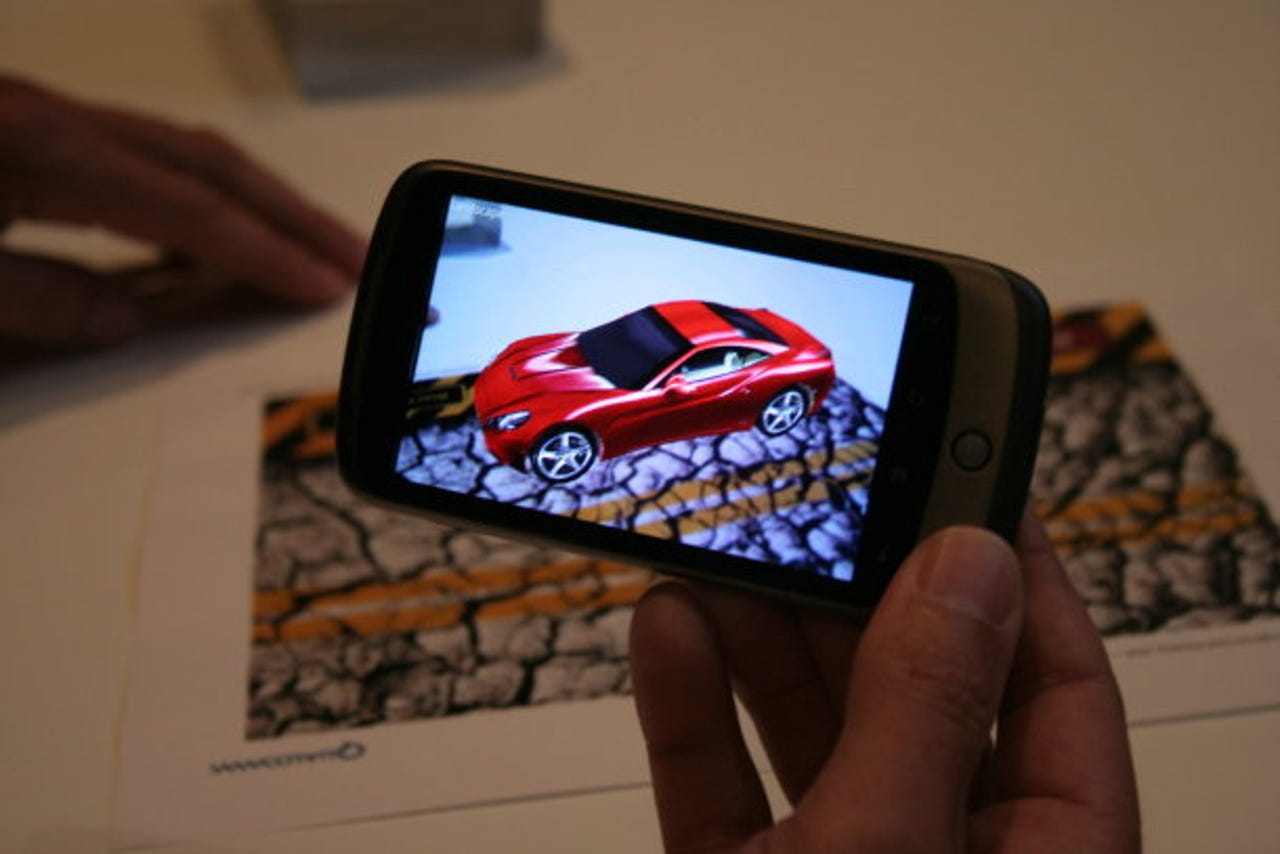Photos: Augmented reality and mobile health - Qualcomm's future tech


Tomorrow's world seen through the lens of your cameraphone today...
Chipmaker Qualcomm offered a glimpse of what the future might hold for the next generation of smartphones at a press event in London yesterday, from augmented reality (shown above) to mobile telemedicine.
"What we see looking forward is that the phone is going to be embedded in the world around you, wireless is going to be in all of the things that are around you in the world," Dr Paul Jacobs, chairman and CEO of Qualcomm, told the event to demonstrate the company's upcoming technology.
"It's going to give you this opportunity to have your phone almost act as a remote control - it'll be able to do things like give you a user interface so I can send video to a projector, get access to a microphone, or speakers, or content that might be available in a given environment, or I might share information with people when I meet them because I can see what information they might be interested in."
Powering the evolution of mobile functionality will be an increase in processing power, according to Jacobs, who said that the chipmaker has a 1.5GHz processor in the pipeline, due in the first quarter of 2011. It's also working on dual-core chipsets, due in the first half of 2011.
Jacobs, pictured above, demoed an augmented reality app running on a smartphone which enables the mobile user to transfer data between different types of connected devices via the app's augmented reality interface.
Using the gallery app Jacobs showed how a mobile user can share a photo stored on the phone with a digital photo frame by pointing the phone's camera at the frame in question.
"That's the kind of thing that you'll be able to do - interact wih the environment right from the phone," he said. "It'll just give you this really natural way of getting back and forth to the things that are around you."
Earlier this year, Qualcomm opened an R&D centre in Austria to focus on developing computer vision and augmented reality software, following the chipmaker's acquisition of the Austrian mobile augmented reality company, Imagination Computer Services.
The chipmaker demoed another augmented reality mobile app - this time using software to inject virtual objects into a mobile user's environment.
Pictured above is a piece of paper printed with a pattern which, when viewed using a smartphone running a particular app, turns into a virtual version of the Rock'em Sock'em Robots game...
...as shown above.
"There's actually nothing on the table but a piece of paper but, when you look at it on the phone, you actually see a game there and you and another person can play that virtual game," said Jacobs.
Augmented reality offers interesting opportunities to marketers, according to Jacobs, enabling characters on the back of cereal packets to be brought to life at the breakfast table, for instance.
Augmented reality will also enable social networking to step off the web and start hovering a few inches above our heads, according to the Qualcomm CEO.
"What's really interesting about this tech I think is it's going to give a user interface to the world," he said. "I'll be able in the future to point my phone at you with the camera and a little thing will pop up above your head of whatever information you're willing to share with me."
Another area where smartphones are going to be playing a bigger role in future is in helping people monitor their health, according to Jacobs.
"Given that you have the phone on you all the time you will be able to have sensors that you wear on your body or the phone will be able to detect things about you," he noted. "You know how today when you have your phone and you feel like you're connected with your friends and family... I think the same thing's going to be true in the future about your health provider."
The chipmaker demoed a wireless health monitoring app which tracks various vital signs such as a mobile user's heart rate, breathing and temperature, and collates the data on the display pictured above.
The app is used in conjunction with this belt, containing various wireless sensors, which the mobile user wears. Bluetooth connectivity is used to transfer data between the sensors and the smartphone, enabling the smartphone user to monitor their own health and even share the data with their doctor.
Another example of a wireless health monitoring device is pictured above - this unit measures blood pressure. The data it generates could be incorporated into the mobile app, allowing it to be monitored remotely.
Some of the hardware on display at Qualcomm's London Innovation day included this MSM8655 developer device, which has a 1GHz Snapdragon processor, 3D graphics and an Adreno 205 GPU.
Mirasol - Qualcomm's low power reflective colour display technology - was shown off in a 5.7-inch e-book reader form factor, pictured above.
According to Qualcomm devices based on the technology are due to launch next year.
A Foxconn tablet prototype running Google Android - pictured above - was also on display...
...along with another Android tablet: Huawei's Ideos S7 slate, shown here.
Also on show was an Android-powered smartbook - remember those?
The HP Compaq Airlife 100 touchscreen connected netbook, pictured above, is available in the Spanish market to customers of operator Telefonica Movistar.
A smartphone that comes apart was also on show. The touchscreen Lenovo LePhone - also running Google's Android OS - is pictured above taken out of its hinged casing, shown open in the background, which includes a full qwerty keyboard.